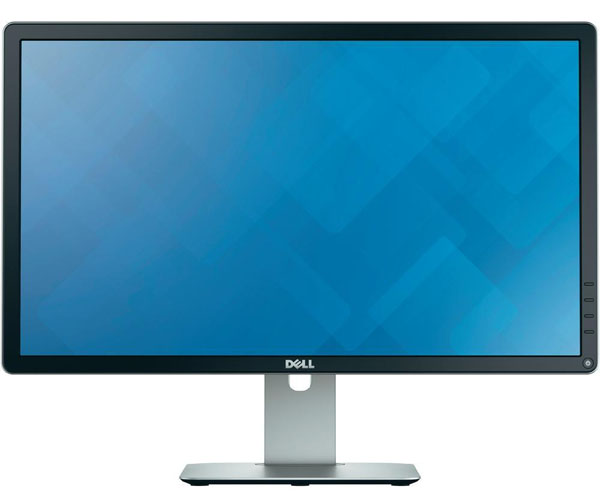Dell P2815Q 28-Inch 4K Ultra HD Monitor Review
Putting a 4K monitor on your desktop means either spending four figures on a 32-inch IGZO screen or going on the cheap with one of the new 28-inch TN-based models. We already reviewed Asus’ PB287Q. Today we look at Dell’s version, the P2815Q.
Why you can trust Tom's Hardware
Packaging, Physical Layout, And Accessories
All of the monitors we’ve reviewed from Dell lately come in cartons free of Styrofoam. Instead, carefully shaped cardboard baffles are used. They provide good protection, save a bit of weight and are easier to recycle.
The accessory complement is light and consists of an IEC power cord, DisplayPort-to-mini and USB 3.0 upstream cables. A CD contains drivers and the user manual. A printed Quick Start Guide is also included.
All that’s required for assembly is to snap the upright onto the panel’s back; no tools are needed.
Product 360
The P2815Q employs an anti-glare layer that is extremely light. With its microscopic pixel pitch, it can’t afford to have anything stand in the way of clarity. The image is extremely crisp and well-saturated, regardless of content. We had no trouble with reflections in our lab, though direct light sources should be avoided.
The bezel is a nice and thin 19 millimeters all around, making it a good candidate for multi-screen setups. In the lower-right are four unlabeled mechanical control buttons plus the power switch, which glows white when active. Pressing the lowest button brings up the OSD.
The base, upright and trim are all made from high-quality plastic with a nice metallic finish. The rest of the chassis is matte black and devoid of sharp edges or angles. Even the panel’s corners are subtly rounded.
In addition to a portrait mode, the monitor has a 4½-inch height range, 90 degrees of swivel and 25 degrees of tilt. The movements are firm and solid with no excess play whatsoever. Considering the P2815Q is currently the least-expensive 4K monitor out there, it doesn’t look like Dell cut corners with build quality.
Get Tom's Hardware's best news and in-depth reviews, straight to your inbox.
From the side, the 2.1-inch thick panel shows a smooth taper and a silver trim strip that covers all sides. If you look carefully, you’ll see slim louvers that help with ventilation. Unfortunately, there are no USB or headphone ports. All the connectivity comes from the bottom-facing input panel.
The smoothness of the P2815Q’s design extends around back. Even the input panel is hidden by a snap-on plastic cover. By routing your cables through the upright’s hole, you can have a very clean desktop. To access the 100mm VESA mount, just remove the upright.
Video inputs are all-digital and include a single HDMI plus two DisplayPort jacks. There is also a DisplayPort output for multi-stream applications. This lets you daisy-chain two monitors into a single video card output. Even though the DP version is 1.2, it won’t support 60Hz operation at 3840x2160.
The audio output is analog-only and can be used for external speakers, headphones or Dell’s add-on speaker bar. USB ports are all version 3.0. There is one upstream and four downstream, with the fourth one facing rearwards.
Current page: Packaging, Physical Layout, And Accessories
Prev Page Dell P2815Q 28-Inch Ultra HD Monitor Review Next Page OSD Setup And Calibration Of The Dell P2815Q
Christian Eberle is a Contributing Editor for Tom's Hardware US. He's a veteran reviewer of A/V equipment, specializing in monitors. Christian began his obsession with tech when he built his first PC in 1991, a 286 running DOS 3.0 at a blazing 12MHz. In 2006, he undertook training from the Imaging Science Foundation in video calibration and testing and thus started a passion for precise imaging that persists to this day. He is also a professional musician with a degree from the New England Conservatory as a classical bassoonist which he used to good effect as a performer with the West Point Army Band from 1987 to 2013. He enjoys watching movies and listening to high-end audio in his custom-built home theater and can be seen riding trails near his home on a race-ready ICE VTX recumbent trike. Christian enjoys the endless summer in Florida where he lives with his wife and Chihuahua and plays with orchestras around the state.




